Forgotten Tournaments: Exploring Football’s Lost Competitions
Updated On: November 13, 2025 by Aaron Connolly
What Are Forgotten Tournaments?
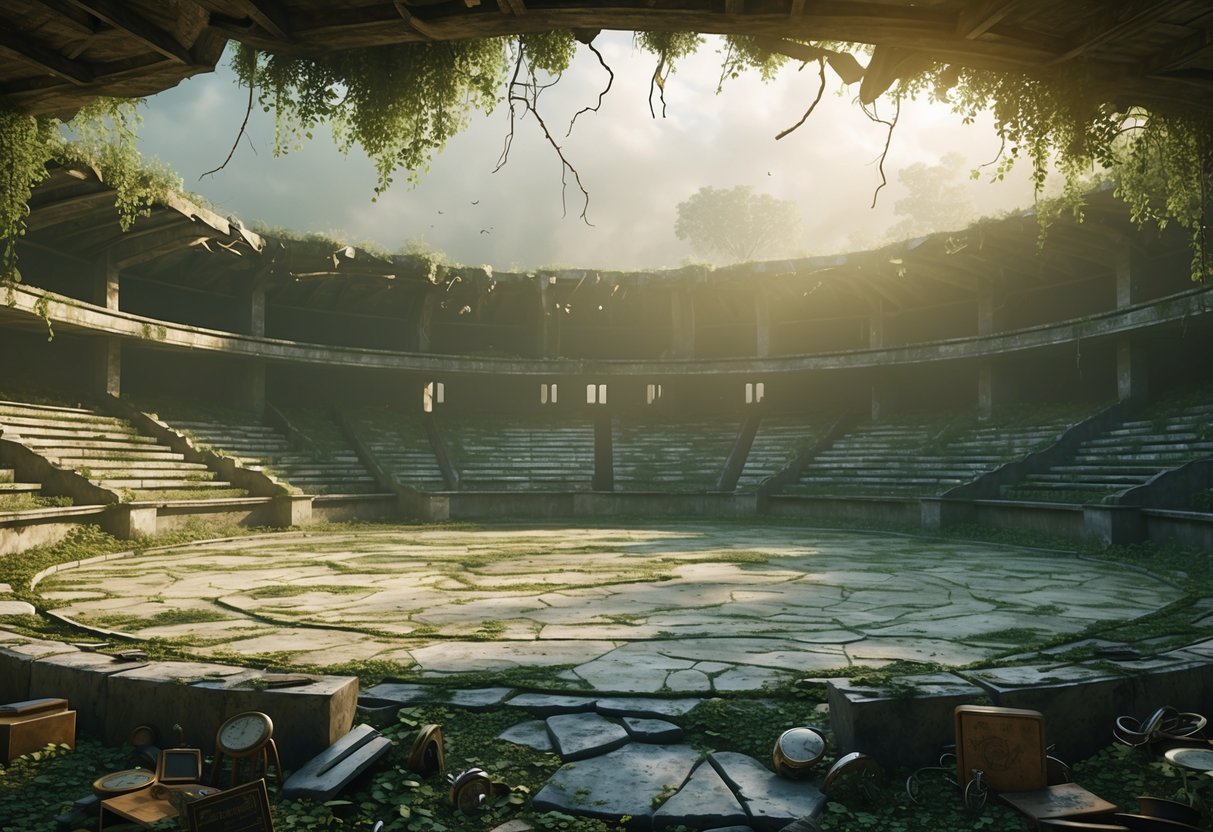
Forgotten tournaments used to pull in huge crowds and really shaped esports history, but now they’ve faded away or just don’t matter anymore. Usually, they disappeared because of money problems, changes in the people running things, or bigger tournaments that just took over the scene.
Definition and Characteristics
These tournaments all had a few things in common that set them apart from the big events you see now. Most of them lasted a handful of years—then just vanished for good.
They often had quirky formats you just don’t see today. Some prize pools were tiny, like £1,000, while others hit six figures. You’d get weird bracket systems, odd team setups, and sometimes even different games mashed together in one event.
Organisers didn’t have the polish of today’s pros. Broadcasts looked rough by modern standards, and sponsorships were small and shaky.
A lot of players who showed up went on to become legends. Teams usually didn’t have much support staff. Players often paid for their own travel and places to stay.
These tournaments filled holes in the calendar that bigger events hadn’t claimed yet. They let organisers experiment with formats that major competitions now use all the time.
Reasons for Being Forgotten
Financial issues ended most of these tournaments. Organisers just couldn’t lock in stable sponsors. When backers pulled out, prize pools shrank. Costs for running events often blew past what they made from tickets or streams.
Disorganised planning caused a bunch of problems too. Delayed matches, technical meltdowns, and bad communication drove both players and viewers up the wall. Some tournaments just ghosted everyone and never announced another season.
Big players in the market squeezed out the little guys. Major organisers grabbed exclusive broadcast rights. Game publishers started backing only the biggest competitions. Fans drifted to tournaments with slicker production.
Games themselves changed so much that some tournaments just didn’t make sense anymore. Updates broke the formats. New patches messed up the rules. Sometimes, the entire competitive scene for a game just died off.
Historical Context
Early esports really leaned on these oddball tournaments. They helped set up stuff we now take for granted—tournament structures, how to broadcast, even player contracts. It was all trial and error back then.
During the 2000s, tournaments seemed to pop up and disappear overnight. Organisers tried everything, from LAN-only setups to events that happened entirely online. Prize money sometimes went to just the winner, or got split up using strange point systems.
Before everything got standardised, regions did their own thing. Europe ran tournaments differently than America. Asian events often used games barely known outside their region. Playing across continents was rare and a technical nightmare.
These tournaments nudged gaming from something casual into something professional. They showed that competitive gaming could actually bring in fans and cash. And honestly, their failures taught organisers a lot about what not to do.
Notable Forgotten Football Tournaments
A bunch of tournaments used to grab football fans’ attention before vanishing from the calendar. Some of Europe’s biggest clubs played in them, creating memorable moments that still echo in football’s history.
Mitropa Cup
The Mitropa Cup kicked off in 1927 and was basically Europe’s first big international club competition. It started with clubs from what was left of the old Austro-Hungarian Empire.
Later, it grew to include all of central Europe. Suddenly, some of the continent’s top clubs were battling it out in what was really just a four-team yearly showdown.
Most Successful Teams:
- Vasas (Hungary): 6 titles
- AC Sparta Prague: Multiple wins
- Ferencváros: Strong record
Mitropa Cup winners could honestly call themselves European champions, since this tournament started nearly 30 years before the European Cup. It helped lay the groundwork for international club football as we know it.
Only five countries ever saw their clubs win. Hungarian teams absolutely dominated.
Anglo-Italian Cup
The Anglo-Italian Cup, in its best-known form, showed up in 1970. Six clubs from England and six from Italy played in three groups of four.
The format was pretty wild—whoever racked up the most points in the group stage made the one-off final. That meant every single group match mattered.
The tournament ran from 1970 to 1986, with a few breaks, and then came back for four more years in the ‘90s before finally disappearing.
Tournament Statistics:
- Total editions: 21
- Italian wins: 15
- English wins: 6
- Most successful club: Modena (2 titles)
A few well-known English teams actually won it, using the tournament to get some European experience. Smaller clubs got rare chances to play international games.
Cup Winners’ Cup
The Cup Winners’ Cup brought together domestic cup winners from every UEFA nation until 1999. Unlike today’s competitions, the whole thing was straight knockout—no group stages.
Each year ended with a single final, making for high-stakes drama and some wild upsets.
Most Successful Teams:
- Barcelona: 4 titles
- Anderlecht: Multiple wins
- AC Milan: Multiple wins
- Dynamo Kiev: Multiple wins
- Chelsea: Multiple wins
After the Champions League arrived, the Cup Winners’ Cup just couldn’t compete. The new format let in more teams from the same country, taking away many clubs that would’ve played in the Cup Winners’ Cup.
A lot of fans still see it as one of the most exciting European tournaments. With straight knockouts, any team could pull off a giant-killing.
The Tinpot Era: Unusual and Overlooked Competitions
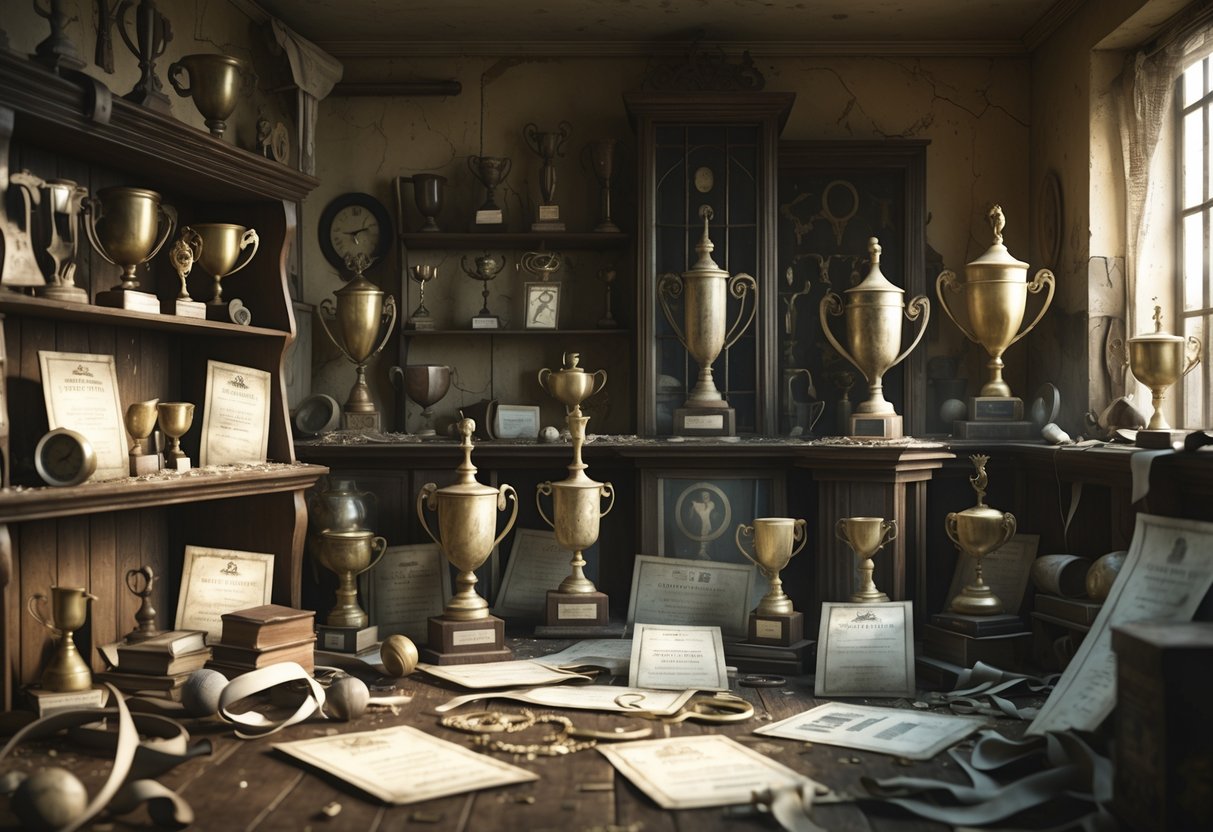
These forgotten tournaments let clubs compete in all sorts of odd formats and win trophies outside the usual league and cup routine. The Zenith Data Systems Cup was short-lived but memorable for lower-division sides. The Watney Cup and Texaco Cup sparked cross-border rivalries that fans still talk about.
Zenith Data Systems Cup
The Zenith Data Systems Cup ran from 1989 to 1992 and was just for clubs in the lower divisions of the Football League. It popped up at a time when football was desperate for new ideas to pull in fans and money.
The format was simple. Teams from divisions two, three, and four played a knockout tournament. Prize money was pretty good for the era, so smaller clubs actually cared about winning.
Key Facts:
- Duration: 1989-1992
- Participants: 64 lower-division clubs
- Winners: Tranmere Rovers (1990), Birmingham City (1991), Peterborough United (1992)
This tournament filled up a quiet spot in the schedule. Fans got extra matches when the league slowed down. Most clubs fielded strong teams instead of just sending out the reserves.
It ended when the Premier League burst onto the scene in 1992. The game changed overnight, and smaller tournaments like this just couldn’t compete for attention or sponsorship.
Watney Cup
The Watney Cup ran from 1970 to 1973 and was actually the first sponsored tournament in English football. It was a real experiment that paved the way for the commercial side of the sport.
Only eight teams made it each year, and the selection was weird—the two highest-scoring teams from each division that hadn’t been promoted or qualified for Europe. Basically, if you scored goals, you got in.
The matches happened in pre-season, July and August. Teams were fresh, and since the entry rules favoured attacking sides, the games were usually pretty entertaining. Crowds showed up in decent numbers, even though some people called it a cash grab.
Notable Features:
- First penalty shoot-out in English football (1970)
- £4,000 prize for the winners
- Games often aired on TV
Derby County won twice (1970, 1971), while Stoke City (1972) and Hull City (1973) also took the trophy. The tournament ended when brewery sponsorship lost its appeal for the Football League.
Texaco Cup
The Texaco Cup ran from 1970 to 1975 and, honestly, it was the boldest of these forgotten competitions. English, Scottish, and Irish clubs all played together in a way that just wouldn’t happen now.
Teams that didn’t make it to Europe got a shot here. That led to some wild matchups—Scottish teams like Hearts and Hibernian facing off against the likes of Newcastle United and Wolves.
Travel costs hit clubs hard. Some sent weakened teams for away games, especially when it meant a long trek to Scotland or Ireland. Still, some matches pulled in big crowds and plenty of excitement.
Tournament Structure:
- Group stage, then knockouts
- 16 teams (8 English, 6 Scottish, 2 Irish)
- Winners included Derby County, Ipswich Town, Newcastle United
Rising costs and packed schedules killed the tournament. European qualification got more valuable, so fewer clubs were left to take part.
Le Tournoi: The Short-Lived Spectacle
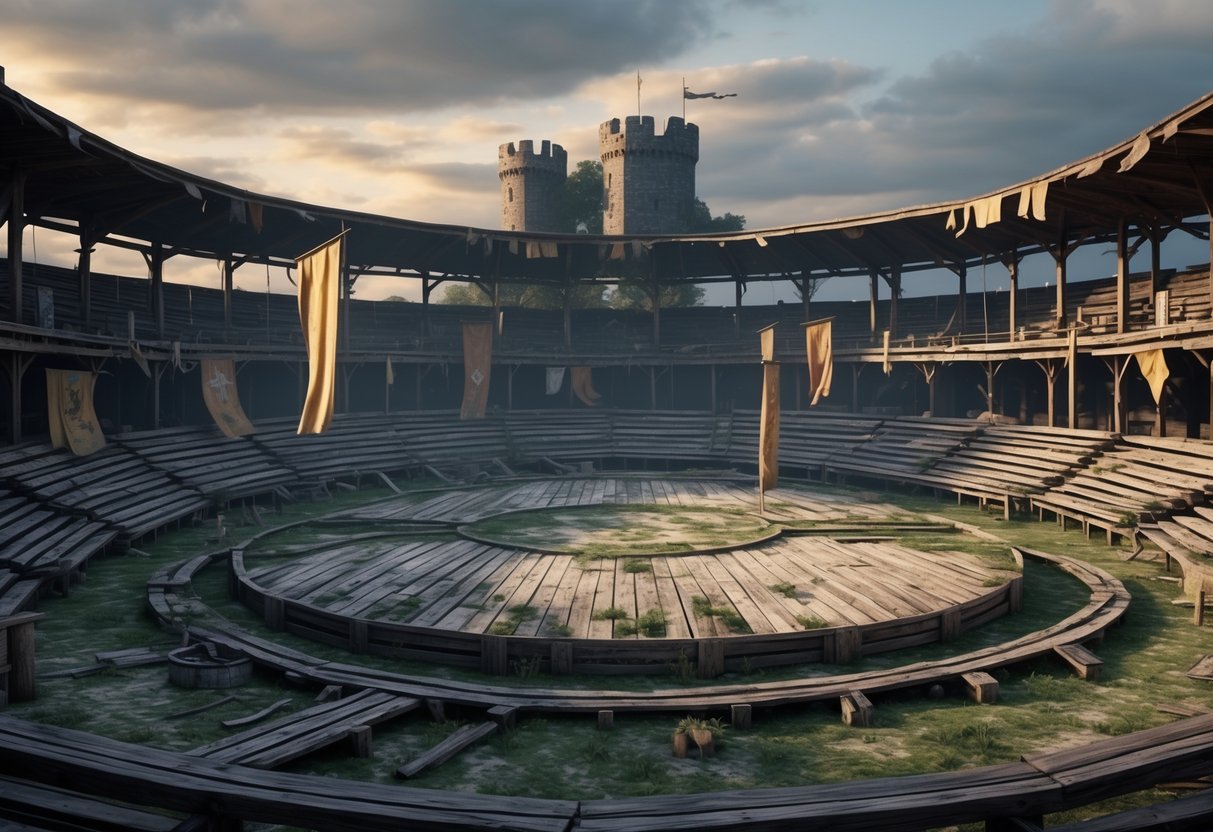
Le Tournoi was a friendly tournament held in France in June 1997. Brazil, England, France, and Italy used it to get ready for the 1998 World Cup. England actually won, beating Italy and France, but most people just remember Roberto Carlos’s mind-bending free kick.
Tournament Format
The setup was super simple. Each team played the other three once, all over a few days.
Points decided the winner—no knockouts, just a mini-league. England wrapped up the win with a game to spare after beating Italy and France.
Games happened in Paris, Nantes, Montpellier, and Lyon. It was a great test run for France’s World Cup venues.
Tournament Structure:
- Teams: 4 (Brazil, England, France, Italy)
- Format: Round-robin
- Duration: Early June 1997
- Venues: 4 French cities
Some matches felt pointless, like when England had already won before facing Brazil—then lost 1-0 anyway.
Memorable Moments
Roberto Carlos gave us the tournament’s most unforgettable moment. His free kick against France swerved in a way that still makes people shake their heads.
He lined it up 35 yards out, walked way back, then smashed it so hard and with so much spin it bent around the wall and clipped the inside post.
England surprised a lot of folks, too. They beat Italy 2-1—their first win over the Italians in 20 years.
Key Results:
- England 2-1 Italy (goals: Ian Wright, Paul Scholes)
- England 1-0 France (Alan Shearer winner)
- Italy 3-3 Brazil (absolute thriller)
- Brazil 1-1 France (Roberto Carlos free kick)
Alan Shearer’s late goal made England the first team to beat France at home since 1949. Paul Scholes scored on his full international debut.
Legacy and Influence
Le Tournoi ended up being England’s last tournament win for ages. Alan Shearer lifted the trophy, but not many people remember that part.
France got to test their stadiums for the World Cup, and the other teams got some good warm-up games.
But really, Roberto Carlos’s free kick stole the show. That one goal became football legend, while the rest of the tournament faded away.
What We Remember:
- Roberto Carlos’s insane free kick
- England’s brief taste of glory
- Some top-quality matches between four giants
Most fans know the Carlos goal but can’t even name the tournament. Le Tournoi worked as TV entertainment, but apart from that one moment, it didn’t leave much behind.
A year later, France and Brazil met again in the World Cup final. France won 3-0, making their earlier draw feel like a footnote.
The Intertoto Cup and Its Impact
The UEFA Intertoto Cup ran from 1961 to 2008. It gave smaller clubs a shot at European competition in the summer. It started as a betting pool thing, but eventually became an official UEFA route to the UEFA Cup, before getting folded into the Europa League qualifiers.
Origins and Structure
The Intertoto Cup kicked off in 1961 as the International Football Cup. Its name mashed up Latin “inter” (between) and German “toto” (betting pool).
Swiss betting organiser Thommen wanted to keep football pools alive during the summer lull. He pushed for meaningful matches when most leagues shut down for the off-season.
UEFA kept its distance at first. They disliked the tournament’s betting ties but didn’t stop it from running.
Early Format Changes:
- 1961-1966: One winner took the Intertoto Cup
- 1967 onwards: Multiple group winners split prize money (CHF 10,000-15,000)
- 1995: UEFA stepped in and added UEFA Cup qualification spots
When UEFA took over in 1995, they totally changed the format. Two winners grabbed UEFA Cup places at first. That rose to three in 1996, then eventually to 11 by 2006.
From 2006-2008, the tournament had three knockout rounds. Teams from smaller nations started in round one, while stronger clubs joined in round three.
Famous Winners
Plenty of clubs used the Intertoto Cup as a launchpad for bigger things in Europe. Some winners went on to make real noise in the UEFA Cup.
Bordeaux reached the 1995-96 UEFA Cup final after taking the Intertoto Cup. Their run convinced UEFA to add a third qualifying spot the next year.
Successful Intertoto Winners:
- Schalke 04 and Lille (2004 winners) both made the Champions League group stage the next season
- Villarreal (2004) also won their Champions League qualifier
- Newcastle United (2006) got the first “outright winner” plaque for going furthest in the UEFA Cup
A few clubs really made the competition their own. Hamburg, Schalke 04, VfB Stuttgart, and Villarreal all won it twice—a joint record.
English clubs didn’t want anything to do with it at first. In 1995, every top-flight English team turned down their three spots. UEFA threatened bans, so three under-strength English sides reluctantly took part. England ended up losing a UEFA Cup place as punishment.
Decline and Merger
Many clubs saw the Intertoto Cup as a hassle before the season. They often sent out weakened squads or just skipped it.
The tournament’s image took a hit because of this. Several countries regularly gave up their allocated spots rather than send teams.
Problems Facing the Competition:
- Clubs played reserve teams
- Countries often forfeited their places
- Scheduling clashed with pre-season
- Prize money lagged behind other competitions
Michel Platini called time on the tournament in December 2007, not long after he became UEFA president. The last Intertoto Cup took place in summer 2008.
From 2009, teams that would have played in the Intertoto Cup went into the expanded UEFA Europa League qualifiers instead. The Europa League added a fourth qualifying round to fit them in.
The UEFA Europa Conference League, launched in 2021, now fills that third-tier European spot for smaller clubs.
Forgotten Tournaments in English Football
English football has seen plenty of competitions fade away after just a few years. These tournaments tried out new ideas but struggled to pull in the top clubs.
Domestic Experiments
The Football League rolled out several short-lived competitions in the 1980s and 1990s. They tried to fill gaps left by European bans and busy fixture lists.
The Full Members Cup ran from 1985 to 1992 for clubs in the top two divisions. It went through a few sponsor names, including the Simod Cup and Zenith Data Systems Cup.
Chelsea won their first trophy here, beating Manchester City 5-4 at Wembley. Both teams had played league games just the day before. Chelsea edged Southampton 1-0, while City drew 2-2 in the Manchester derby.
The Screen Sport Super Cup lasted only one season in 1985-86. It was set up for clubs banned from Europe after Heysel. Six teams took part, including Everton, Liverpool, and Manchester United.
Liverpool beat Everton 7-2 on aggregate in the final. Fixture congestion pushed the final back by a full season. Ian Rush scored five goals over the two legs.
The Anglo-Italian Cup ran for 25 years in three different formats. It started in 1970 to give lower-division teams a European chance. Swindon Town won the first one after violence at Napoli cut their final short.
Club Participation Trends
Top English clubs often steered clear of these experiments. Arsenal, Liverpool, Manchester United, and Tottenham never played in the Full Members Cup. They stuck with the FA Cup and league matches instead.
Second-tier clubs jumped at the chance for silverware and a Wembley day out. Teams like Chelsea, Nottingham Forest, and Blackburn took these tournaments more seriously.
Participation dipped when fixtures clashed. The Football League struggled to find dates that didn’t overlap with other matches. Finals often got delayed or played midweek.
Foreign tournaments like the Intertoto Cup got the cold shoulder from English clubs. Players and managers wanted a summer break, not European travel. Newcastle United won in 2006, but most Premier League sides just gave up their spots.
Prize money and prestige never matched the big competitions. These tournaments faded away when the Premier League took off in 1992 and European football expanded.
Why Some Tournaments Persist and Others Do Not
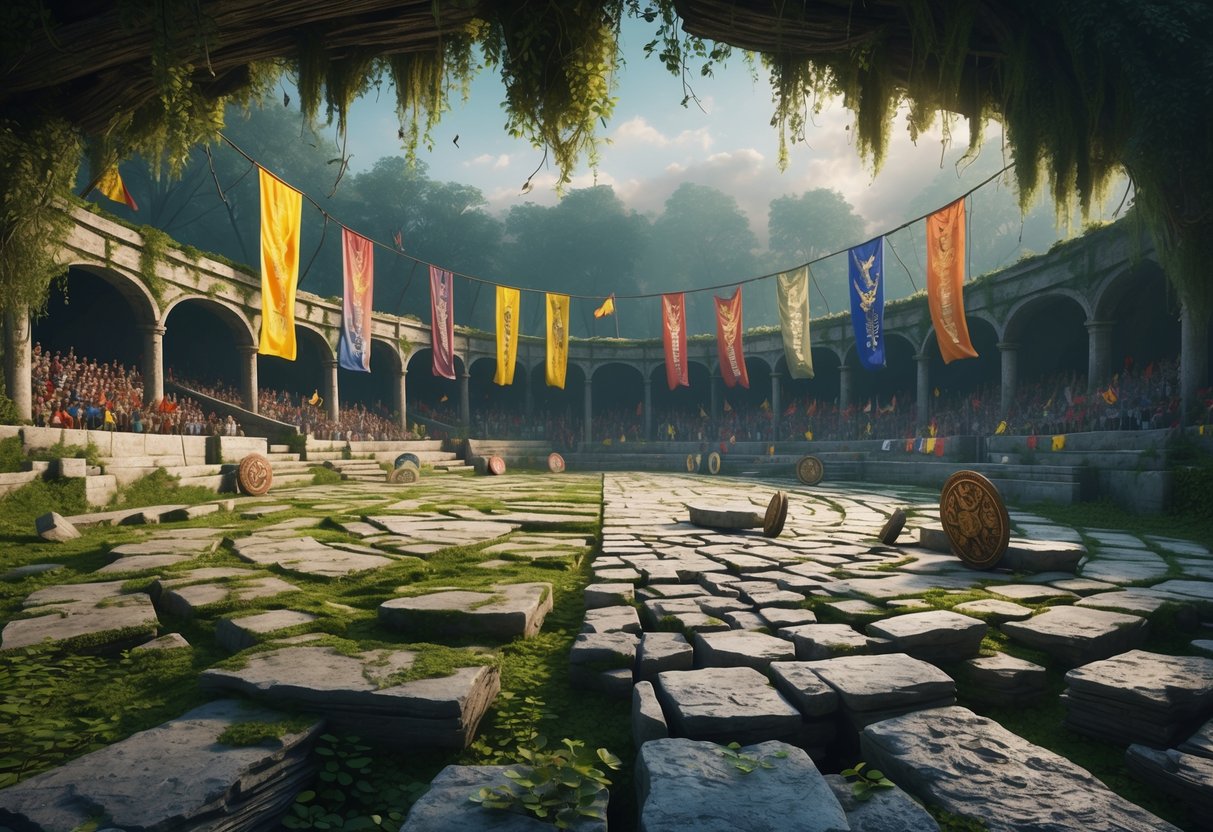
Money and flexible formats decide whether a tournament survives or not. If there’s cash and the format can change with the times, competitions last. If not, they’re doomed.
Role of Commercial Interests
TV and streaming deals pretty much decide if a tournament sticks around. Big events like The International keep going because Valve funds them through Dota 2 battle pass sales.
Without sponsors, tournaments feel the squeeze fast. Tons of early Counter-Strike events vanished when sponsors bailed during tough economic times.
Prize pool sustainability jumps all over the place. If a tournament relies just on entry fees, it struggles to bring in top teams. Pros need guaranteed payouts to cover travel and time.
| Funding Source | Stability | Examples |
|---|---|---|
| Developer-backed | High | The International, League of Legends World Championship |
| Sponsor-dependent | Medium | Various third-party tournaments |
| Community-funded | Low | Small regional events |
Organisers who lock in multi-year deals build up a reputation. One-off events rarely last because teams can’t plan around them.
Changes in Competition Formats
Viewer attention spans seem shorter than ever. Audiences want fast, intense matches—not endless qualifiers.
Old-school tournaments often ran double-elimination brackets that dragged on for weeks. Now, the best events squeeze the action into weekends or short weekly runs.
Online vs. offline play changed everything during 2020-2021. Tournaments that switched to remote play survived. Those stuck on in-person events often disappeared for good.
Game developers now tweak formats directly. When they update their games, tournaments have to adapt or get left behind.
Regional tastes matter too. Asian fans like different formats than European ones, so international events have to find a middle ground.
Here’s a quick tip: check out the most successful tournaments in your favourite esports. There’s usually a reason they keep players and fans coming back.
Cultural and Social Impact of Forgotten Tournaments
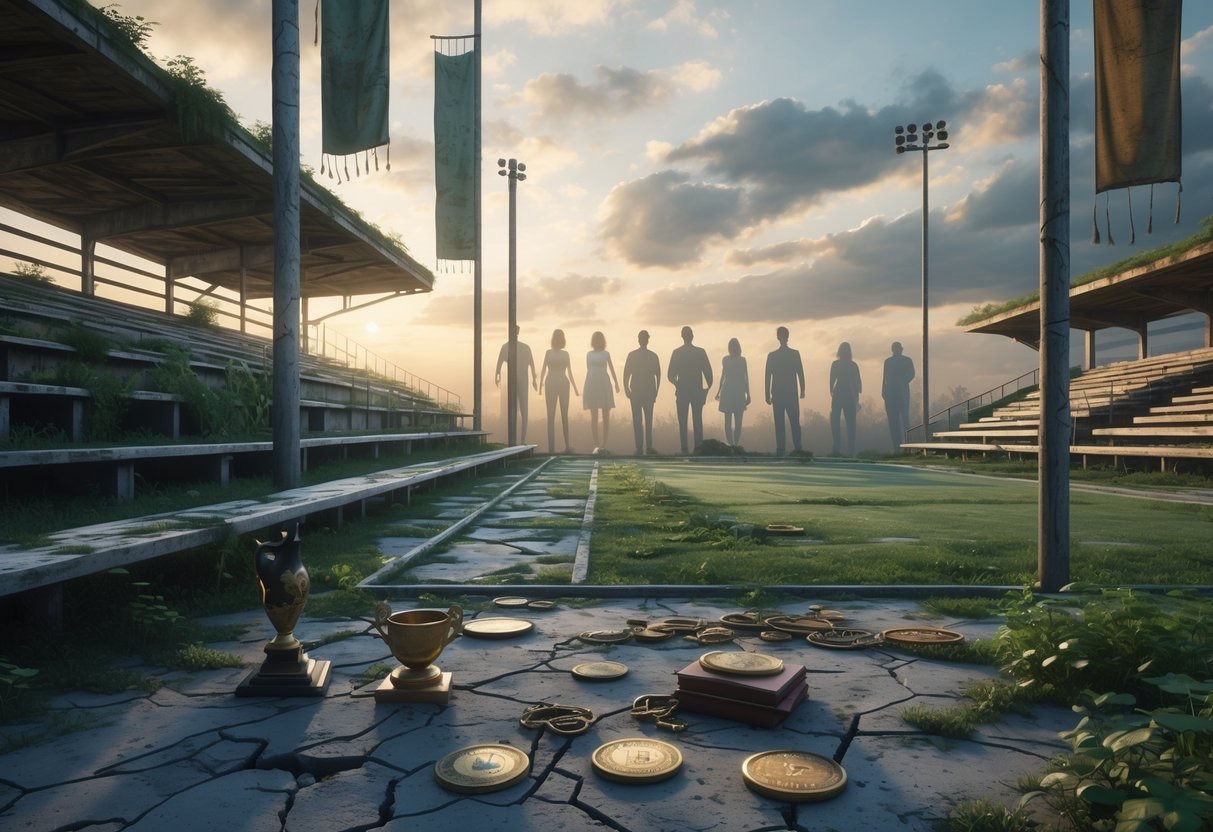
Forgotten tournaments shaped football in ways people might not expect. These competitions brought fans together across borders and got a very different kind of media coverage than today’s events.
Fan Perspectives
The British Home Championship built some of football’s fiercest regional rivalries. Fans from England, Scotland, Wales, and Northern Ireland hopped on trains and ferries to cheer for their teams. Sometimes, the journey was half the fun.
Local pubs and community centres buzzed during tournament weeks. Families huddled around radios to catch every detail. The emotional connection ran deep because these tournaments came around every year.
Generational bonds grew from shared memories. Grandparents still pass down stories of legendary matches to the grandkids. The 1976 British Home Championship? Still a hot topic in Scottish homes.
Many fans say these old tournaments felt more personal than today’s mega-events. Smaller stadiums made for closer atmospheres. Players often hung out with supporters after games.
The Intercontinental Cup sparked fierce loyalty between European and South American fans. These matches weren’t just games—they were battles for bragging rights.
Media Attention Then and Now
TV coverage of forgotten tournaments was limited but super focused. BBC and ITV sometimes gave over whole afternoons to the British Home Championship. Commentary was more about teaching than entertaining.
Newspapers ran long match reports and player interviews. Local papers put these tournaments on the front page during the season. Radio was still king for live updates.
Social media wasn’t a thing—fans talked about matches in person or sent letters to sports editors. Conversations moved slower, but maybe felt more thoughtful.
Modern tournaments get non-stop coverage on every platform. Back then, coverage came in short bursts, which made each bit of news feel special.
Fans used to wait for weekly TV shows to see the goals. Match footage was rare and felt precious.
The Artemio Franchi Trophy barely got any global press compared to today’s FIFA events. Only the most dedicated football journalists followed those matches.
Collecting Memorabilia from Forgotten Tournaments
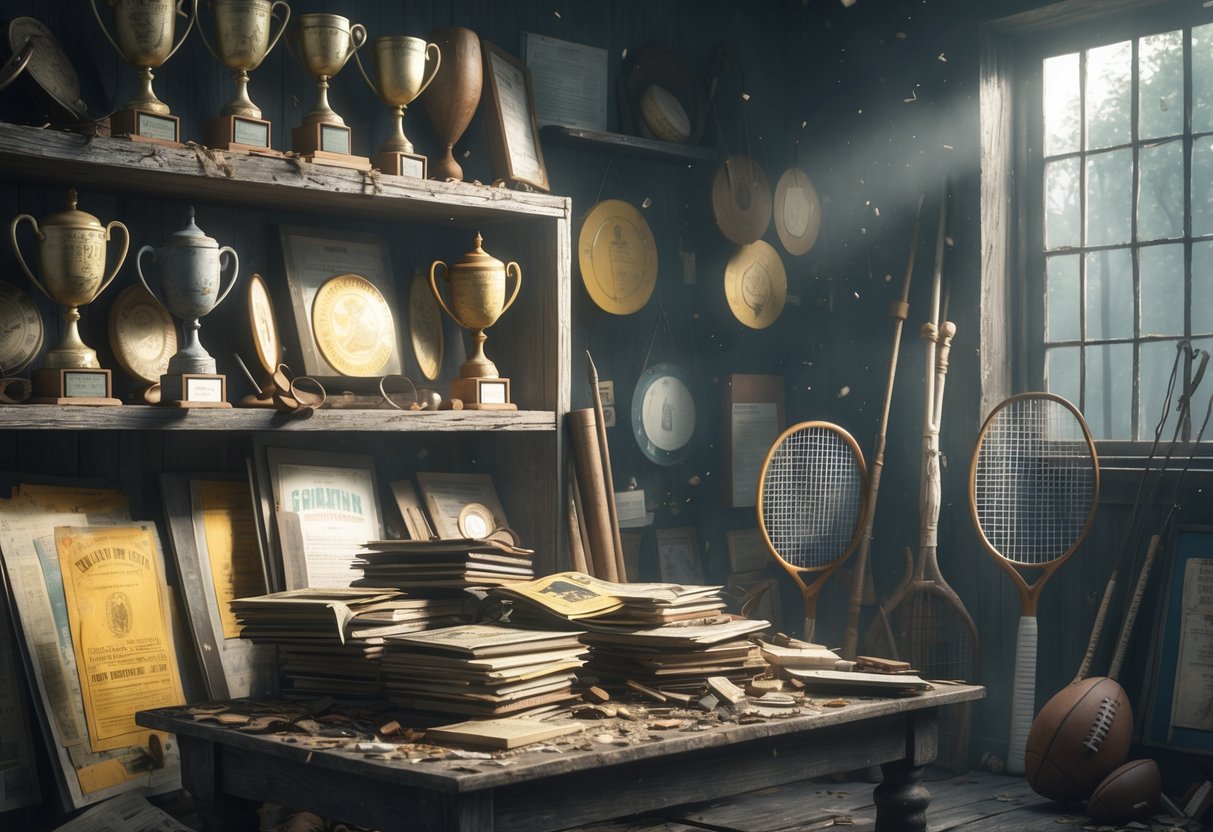
Items from competitions that don’t exist anymore can get surprisingly pricey. Programmes and tickets are the easiest way in for collectors, while medals and trophies fetch serious money.
Programmes and Tickets
Match programmes from forgotten tournaments are usually the cheapest starting point. Clubs printed them in small numbers and most got tossed after the games.
Anglo-Italian Cup programmes from the 1970s now go for £15-40 online. Earlier ones can get much higher because they’re so rare.
Ticket stubs are even harder to find since fans just threw them away. If you have a full ticket in good shape, it’s worth more than a ripped stub.
Programmes worth looking for:
- Zenith Data Systems Cup (1989-1992)
- Full Members’ Cup (1985-1992)
- Anglo-Scottish Cup (1975-1981)
Keep paper items in acid-free sleeves and out of the sun. Humidity ruins programmes fast, so stick silica gel packets in your storage boxes.
Check out local boot sales and charity shops. A lot of sellers don’t realise how valuable old tournament stuff can be.
Valuable Collectible Items
Player-worn shirts from these tournaments are at the top of most collectors’ wish lists. They’re rare at auction and can cost hundreds.
Medals and trophies sometimes show up when clubs clear out their storerooms. Winners’ medals from defunct competitions are especially prized.
High-value items to watch for:
- Match-worn shirts with tournament patches
- Referee gear from specific games
- Official tournament balls
- Presentation items given to clubs
Anglo-Italian Cup winner’s medals have gone for over £200. Player shirts with original badges can fetch £150-300, depending on the club and player.
If you’re buying valuable items, make sure you get proof they’re real. Ask for provenance and think about professional authentication for big purchases.
Join collector groups online. Members often tip each other off about rare finds, and lots of valuable stuff gets sold privately before it ever hits auction.
Revival Attempts and Modern Tributes
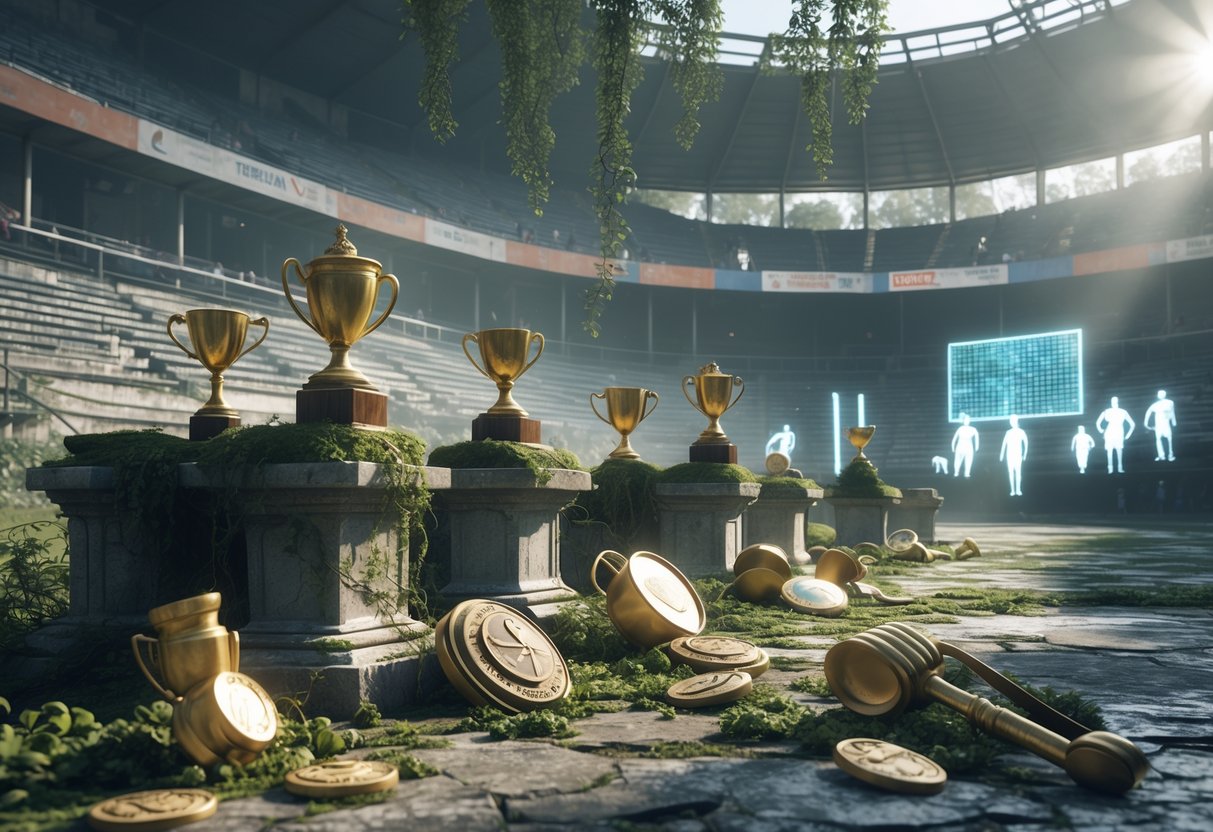
Football associations and fan groups now try to revive forgotten tournaments through special matches and dedicated writing. These efforts help keep the rich history of these competitions alive for new generations.
Friendly Matches and Anniversary Events
Lots of football organisations celebrate big anniversaries with one-off friendly matches. The British Home Championship, which ran from 1884 to 1984, still gets nods through special fixtures between England, Scotland, Wales, and Northern Ireland.
Clubs often organise tribute matches on milestone dates. These games usually feature classic kits and old-school match formats.
Sometimes, local football associations host small tournaments with retro rules. It’s a fun throwback, honestly.
Revival tournaments manage to pull grassroots communities together. You get this cool mix of nostalgia and modern planning.
Fan groups sometimes invent their own versions of forgotten competitions. It’s not always a huge success, but the passion is there.
Some attempts run into trouble. Weather, costs, and fan interest can really put a damper on things.
Take the 1839 Eglinton Tournament revival—it showed just how tough it is to recreate historical events properly.
Role in Football Literature
Football historians love to write detailed books about lost tournaments. They work hard to preserve match records, player stories, and the kind of cultural context that might otherwise fade away.
We see dedicated museum exhibits for these forgotten competitions. Display cases show off old trophies, programmes, and faded photos.
Interactive sections let visitors poke around old tournament brackets and results. It’s surprisingly engaging.
Online content creators jump in with videos about obscure tournaments. Social media accounts share odd historical tidbits and rare footage.
These digital efforts reach younger fans who might never hear about these competitions otherwise. It’s a nice way to keep the past alive.
Academic researchers dig into why tournaments ended and what impact they left on football history. Their work helps us see how politics and changes in the sport shaped these competitions.
Comparing Forgotten Tournaments to Enduring Classics
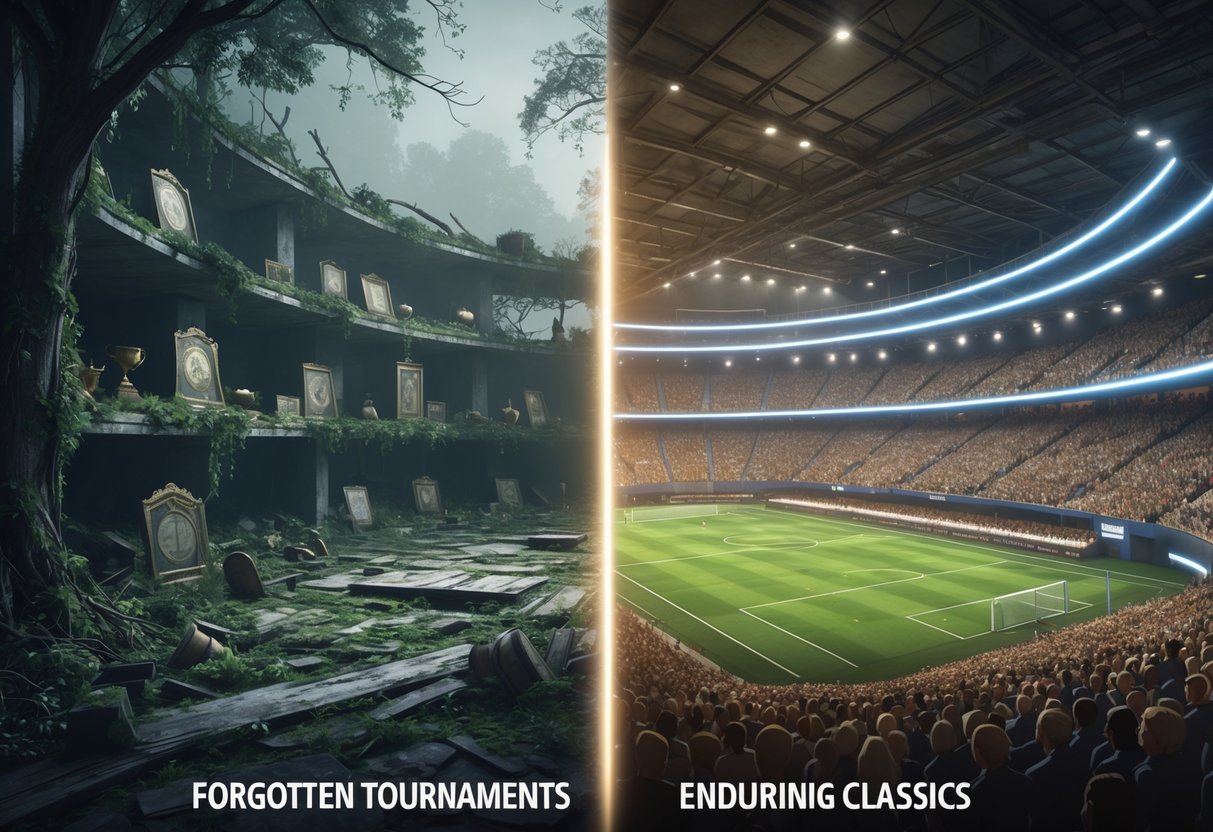
The FA Cup has stuck around for 150 years, while plenty of other tournaments just faded away. Why do some competitions last and others vanish? Figuring that out reveals what really matters for tournament longevity.
The FA Cup’s Lasting Success
The FA Cup shows that simple rules and open entry give a tournament staying power. Any football club can sign up, from Premier League giants to tiny village teams.
This open format creates those classic David versus Goliath stories. When a non-league team faces Manchester United, millions tune in for a possible upset.
Key success factors:
- Clear structure: Single elimination matches, with replays if needed
- Historic venues: Wembley Stadium finals add real prestige
- Media coverage: BBC highlights draw huge audiences
- Prize money: Smaller clubs get a real shot at rewards
The tournament keeps evolving but never loses its core identity. Modern broadcasts and VAR spice things up, but traditional kick-off times stick around.
Regional qualifying rounds give local clubs their moment in the spotlight. This grassroots connection keeps community investment strong across England.
Lessons Learned from Defunct Competitions
Failed tournaments usually get tripped up by overcomplicated formats or just not appealing to enough people. Pushball, even with royal backing in 1904, fizzled out because it was too tough and slow.
The sport needed a giant, pricey ball—hardly anyone could afford it. Only one existed at first, so it never really caught on.
Common failure patterns:
- High barriers to entry: Gear costs a fortune, or only a select few can join
- Unclear rules: Confusing formats that leave spectators scratching their heads
- Limited accessibility: Geography or money keeps people out
- Lack of media support: No coverage means no fans
Modern tournaments sometimes repeat these mistakes. Some esports competitions fold because they chase tiny audiences or keep changing formats.
The best tournaments find a balance between tradition and innovation. They open the door for more people but keep their unique character and competitive edge.
Frequently Asked Questions
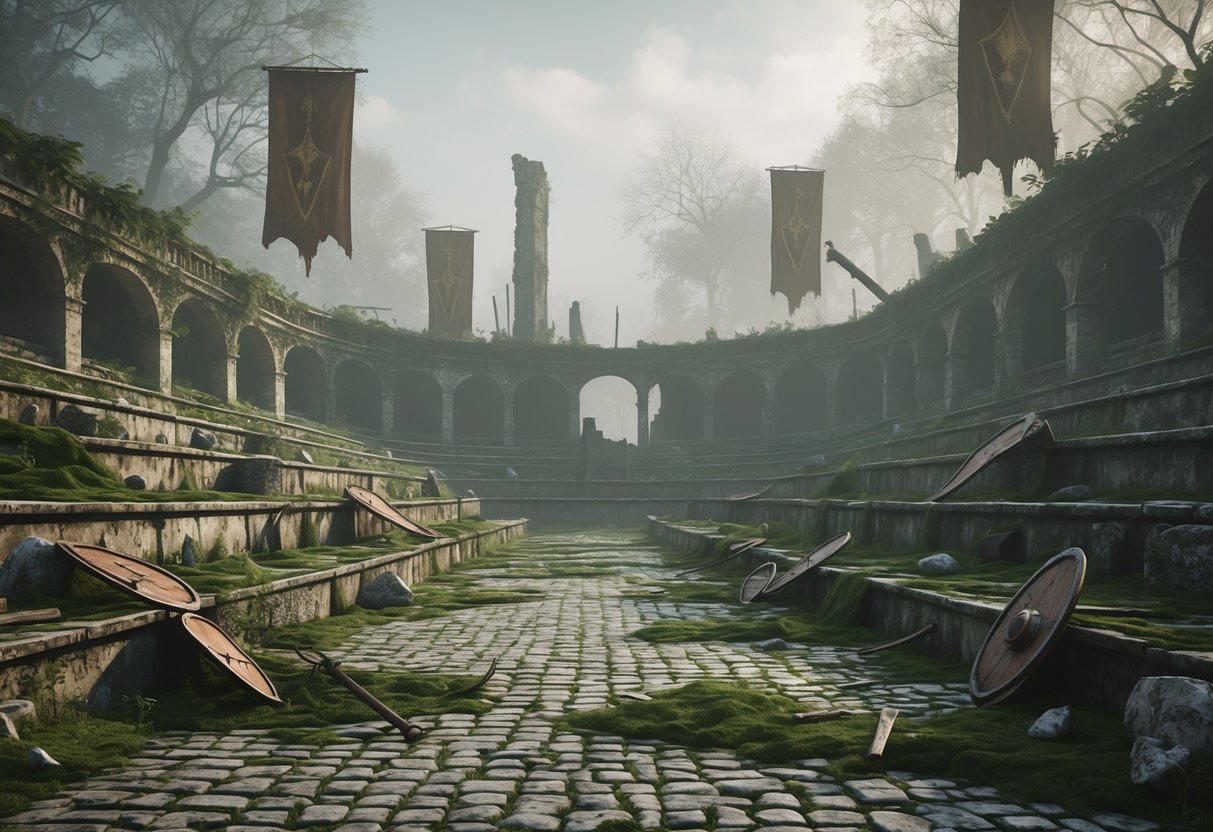
Lots of forgotten tournaments spark curiosity about lost sporting events, discontinued competitions, and where you can still find traces of these historical contests that once drew big crowds.
What are some lost or lesser-known sports competitions from history?
The Intercalated Olympic Games of 1906 in Athens were supposed to happen every four years between the main Olympics. They brought together 884 athletes from 20 countries, but later lost their official Olympic status.
The Lonsdale Belt boxing tournaments ran in Britain from 1909 to 1929. Fighters went for ornate belts instead of prize money. Only a few of these legendary contests get remembered now.
Women’s cricket tournaments flourished in England during the 1930s and 1940s. The Women’s Cricket Association ran county championships that drew thousands, but interest faded in the 1950s.
Can you share some information about historically significant tournaments that have ceased to exist?
The Challenge Cup for association football actually predates the FA Cup. It ran from 1862 to 1867 before disagreements over rules and eligibility ended it.
Motor racing’s Vanderbilt Cup ran in America from 1904 to 1916. It was one of the first big international racing prizes. The event stopped because of safety concerns and World War I.
The British Empire Games came before the Commonwealth Games, running from 1930 to 1950. These multi-sport tournaments featured different sports and nations than the version we see today.
How can I find records or results of sports events that are no longer held?
You’ll find the best coverage of forgotten tournaments in local newspaper archives. Libraries often keep microfilm copies that go back more than a century.
Digital databases like the British Newspaper Archive make searching easier. Sports governing bodies sometimes keep old records in their archives too.
Cricket boards, football associations, and athletics federations usually hang onto results from defunct competitions. University sports departments can be a goldmine—they sometimes have old programmes and results tucked away.
What factors lead to the discontinuation of once-popular sporting contests?
World wars stopped many tournaments for good. Organisers lost venues, participants, and funding during wartime and often couldn’t get things going again.
Rule changes and modernisation killed off some older formats. Traditional tournaments couldn’t always adapt to new safety standards or broadcast demands.
Financial pressures forced regional competitions to shut down. Rising costs for venues, travel, and insurance made small tournaments a tough sell compared to the big leagues.
Television coverage focused attention on fewer, bigger tournaments. Sponsors and fans just followed the spotlight.
Could you list historic matches or series that have been overshadowed by more modern events?
The original University Boat Race between Oxford and Cambridge started as a series of separate races. Eventually, it turned into the single annual event we know now.
County cricket championships before 1890 used different scoring systems and match lengths. Back then, they crowned champions with complex point systems instead of simple win-loss records.
Early football cup competitions in Scotland ran alongside the Scottish Cup before getting absorbed or just fading away. Tournaments like the Glasgow Cup once drew serious local interest.
Where might one look to find memorabilia or artefacts from sports tournaments that have been forgotten?
Auction houses love sporting memorabilia and sometimes throw in items from tournaments that no longer exist. Bonhams and Christie’s often put up old trophies and programmes for auction, and you never quite know what might turn up.
Local museums usually keep sporting collections that families or clubs have donated. County museums, in particular, seem to gather up bits and pieces from regional tournaments that once happened nearby.
Antique shops near old sporting venues sometimes have old programmes, tickets, or even the odd small trophy. They get these things from house clearances or estate sales, so you might stumble on a real gem if you poke around.
If you’re searching online, eBay’s always got something from forgotten tournaments thanks to private collectors. Try searching for a specific tournament name, or just type in “vintage sports programme” or “antique trophy” and see what pops up.

